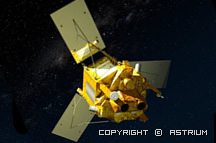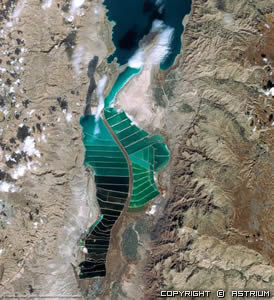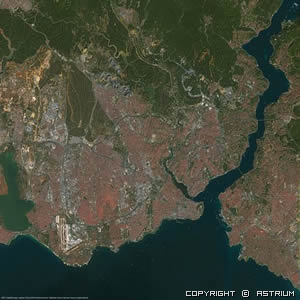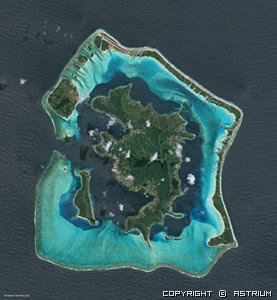SPOT 6 and 7 (Satellite Probatoire de l‘Observation de la Terre) are two agile Earth observation satellites to continue the services of the SPOT 4 and 5 satellites.
Both satellites offer 1.5 meter resolution data in a 60 kilometer by 60 kilometer swath, and improved agility with twice the design life of previous SPOT satellites.
The satellites feature two NAOMI (New AstroSat Optical Modular Instrument) instruments, high-resolution pushbroom imagers based on a Korsch-type telescope designed and developed at EADS Astrium SAS. The imager provides imagery of 1.5 m in Pan and four multispectral (MS) bands of 8 m multispectral.
The satellites aree coorbital with the high resolution Pléiades-HR satellites.
For more information:http://www.astrium-geo.com/en/147-spot-6-7
| Number of satellites | 2 |
| Launch periods | SPOT 6: 9 September, 2012 SPOT 7: 30 June, 2014 |
| Design lifetime | 10 years |
| Size | Body: ~ 1.55 x 1.75 x 2.7 m Solar array wingspan 5,4 m2 |
| Launch mass | 712 kg |
| Altitude | 694 km |
| Onboard Storage | 1 Tbits end of life (Solid State Mass Memory) |
Orbital characteristics and viewing capability
| Orbit | Sun-synchronous; 10:00 AM local time at descending node |
| Period | 98.79 minutes |
| Cycle | 26 days |
| Viewing angle | Standard: +/- 30° in roll | Extended: +/- 45° in roll |
| Revisit | • 1 day with SPOT 6 and SPOT 7 operating simultaneously • Between 1 and 3 days with only one satellite in operation (Depends on the latitude of the area of interest) |
| Acquisition capacity | Up to 6 million sq.km daily with SPOT 6 and SPOT 7 when operating simultaneously |
| Nominal Imaging Mode | 60km-swath strips oriented along North-South axis; up to 600km length |
| Stereo capability | Fore and aft mode; Single pass stereo and tri-stereo |
Orbital characteristics and viewing capability
| Optical system |
One instrument made of 2 identical Korsch telescopes, each with a 200 mm aperture, delivering the expected swath. |
| Detectors | PAN array assembly: 28,000 pixels MS array assembly: 4 x 7000 pixels |
| Spectral bands | • Panchromatic: 0.450-0.745 µm • Blue: 0.450-0.520 µm • Green: 0.530-0.590 µm • Red: 0.625-0.695 µm • Near Infrared: 0.760-0.890 µm The 5 bands are always acquired simultaneously. |
| Swath | 60km at nadir |
| Dynamic range at acquisition | 12 bits per pixel |
| Spatial Resolution | 1.5m Pan/ 6m MS |
| Location accuracy specification | • 35m CE 90 without GCP within a 30° viewing angle cone • 10m CE90 for Ortho products where Reference3D is available |
| Instrument telemetry link rate | X-band channel - 300 Mbits/s |
Ground segment
| Main receiving stations |
• Toulouse (France) • Kiruna (Sweden) |
| S-Band uplink stations | • Kiruna (Sweden) • Inuvik (Canada) |
| Programming centre | Astrium GEO-Information Service – Toulouse (France) Astrium GEO-Information Service – Chantilly VA (USA) |
| Production centre |
Astrium GEO-Information Service – Toulouse (France |
| Tasking plans refresh frequency | 6 times/day/satellite |
| Update of weather forecast | 4 times/day – fully automatic process |
| Satellite control centre | Astrium Satellite – Toulouse (France) |



